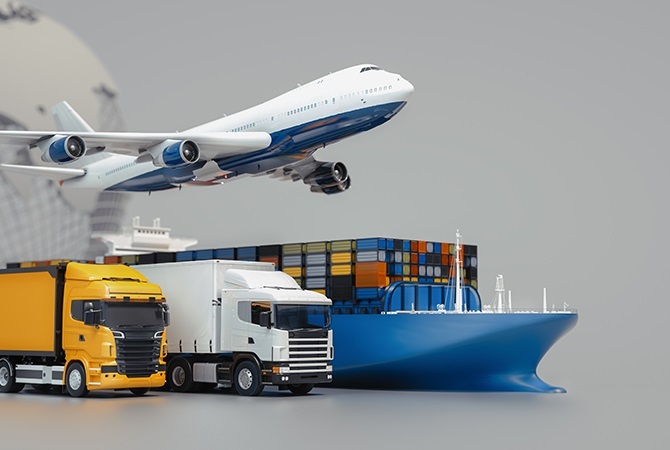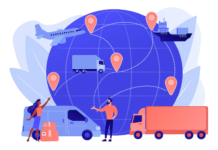New technology and the demand for eco-friendly logistics have significantly changed how goods are transported. Moving things around the world, exciting new ideas are being explored in this article. Not only do these new ideas improve efficiency, but they also contribute to a cleaner and eco-friendly future.
Technology will become even more important in connecting businesses, communities, and countries as technology improves. Some of the most popular innovations are mentioned below in the article:
Self-driving Trucks:
Frequently mentioned in conjunction with the future of transportation, self-driving trucks hold great promise. With self-driving technology, these trucks are capable of driving themselves. This technology will improve efficiency and safety, and the need for human drivers will be reduced.
These skills include finding their way through complicated routes, making short-term decisions, and talking to other cars while driving. Autonomous trucks have many benefits. By reducing costs, they can save money. Communication between them makes roads safer, which they can do. Reduced accidents and traffic go hand in hand.
Hyperloop and High-Speed Rail:
There is competition to move things quickly, and Hyperloop technology and high-speed rail systems are leading the way. Imagine products zooming through airtight tubes at incredibly fast speeds, making deliveries much quicker and improving efficiency in shipping. Hyperloop, which has very little air resistance, could make this idea come true.
Fast train systems, commonly used for carrying people, are now also used to transport goods quickly and efficiently. This helps ensure that cargo arrives swiftly and reliably while using less energy. These new ideas could completely change how goods are transported by making cities and regions more connected and faster.
Fleet Management Software:
GPS and RFID technology help track things accurately. General freight transport also uses telematics to monitor the location and condition of its vehicles, which can help to improve safety and efficiency.
This helps logistics providers monitor where goods are going and quickly respond if anything goes wrong. Additionally, tamper-evident features improve cargo security by stopping unauthorized access and theft.
Predictive Analytics:
Using predictive analytics and artificial intelligence in freight transportation has led to great outcomes in improving routes, saving fuel, and foreseeing maintenance requirements. These systems analyze big sets of data in real-time. They give information about traffic, weather, and vehicle health. This helps to change routes as needed.
This also helps you save time and reduces the fuel used and vehicle damage. Predictive maintenance algorithms can predict when parts require maintenance, stopping expensive breakdowns and interruptions to the supply chain.
Drone Deliveries:
Using drones to deliver packages in remote and difficult-to-access places is changing how we think about how things are transported. These flying machines provide a fast, affordable, and eco-friendly way to move small to medium-sized packages. Drones are very useful in places with limited infrastructure.
Traditional vehicles have difficulty getting there, but drones can easily reach their destination. They can travel through difficult land and bring important things like supplies, medical tools, and food quickly and accurately to faraway communities.
Automated Warehouses:
The transportation industry is seeing more and more warehouses that use robots and advanced sorting systems. These very efficient buildings reduce the amount of work people do, saving money and making loading and unloading things happen faster.
Robots with smart eyes and clever thinking can move around shelves, find things, and carry them to specific places. Sophisticated sorting systems help handle the movement of items, making sure that orders are completed correctly and quickly.
Eco-friendly Ports:
Ports, often called entrances to worldwide trade, are adopting eco-friendly technologies to decrease their environmental impact. Shore power systems help ships connect to land-based electrical grids when docked. This reduces the need for generators on board the ships and helps to keep the air clean by reducing pollution.
Ports also put money into energy-saving equipment for moving cargo, like electric cranes and forklifts. This helps to lower noise pollution. Using sustainable practices at ports helps the environment and improves nearby communities’ lives.
Conclusion:
As the shipping industry changes, new ideas are still important in moving things worldwide. New technologies like self-driving trucks, blockchain, and sustainable energy solutions are making a big impact. They help businesses run more efficiently and also contribute to a greener future. The future of moving goods is looking good.
Adopting these new ideas is not only about staying ahead; it’s a promise to create a better and more connected world where big challenges are overcome, and a brighter future is achieved for everyone.
Read Also: How to Furnish Your Home the Eco-Friendly Way



































































